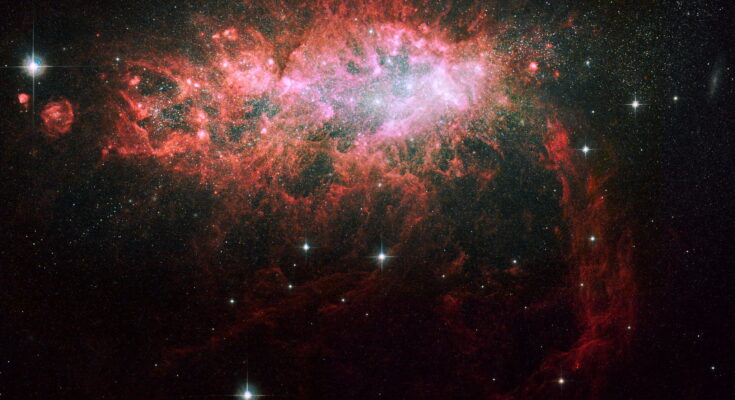New research which looks at data from the Hubble and James Webb telescopes has revealed how dwarf galaxies brought light to the shapeless, black void of our universe.
According to data from the telescopes, it was small dwarf galaxies surging to life that brought about the free-flying photons in the early universe. This eventually cleared space of the murky hydrogen that initially filled it.
“This discovery unveils the crucial role played by ultra-faint galaxies in the early Universe’s evolution,” astrophysicist Iryna Chemerynska of the Institut d’Astrophysique de Paris told ScienceAlert.com.
Chemerynska added: “They produce ionizing photons that transform neutral hydrogen into ionized plasma during cosmic reionization. It highlights the importance of understanding low-mass galaxies in shaping the Universe’s history.”
When the universe began with the big bang, within minutes, space was filled with a hot, thick mist of ionized plasma. The little light that did exist would not have been strong enough to dispel the fog, and photons would simply have bounded around the free electrons, making the universe dark.
After around 300,000 years of the universe cooling down, protons and electrons began to come together to form neutral hydrogen and a small amount of helium gas. Most wavelengths of light could make it through this neutral medium. However, there weren’t many light sources around to provide light.
The first stars were born from these portions of hydrogen and helium. These first balls of gas brought radiation that was powerful enough to peel electrons away from their nuclei and re-ionize the gas. At the point this was happening, the universe had expanded so greatly that the gas was diffuse and could not stop light from shining out.
Around one billion years after the big bang, the conclusion of the phase known as the cosmic dawn, the universe was completely re-ionized, meaning light was aplenty.
However, as there was so much mist at the time of the cosmic dawn, scientists have not been able to see what there is there. This is due to the fact that it is so faint and distant.
Dwarf galaxies are the key
The James Webb Space Telescope (JWST) was designed to help scientists look into the cosmic dawn and attempt to find out what can be found there. It has proved successful, revealing lots of new phenomena about this significant time in the formation of our universe.
The telescope has now revealed that dwarf galaxies are the main factor when it comes to reionization. An international team, headed by astrophysicist Hakim Atek of the Institut d’Astrophysique de Paris, examined data on a galaxy cluster known as Abell 2744. This is strengthened by data from the Hubble telescope.
Abell 2744 is reportedly so dense that space-time warps around it, bringing about a cosmic lens. This means that any distant light traveling towards us through that space-time becomes magnified.
Thus, researchers were able to detect dwarf galaxies close to the cosmic dawn.



